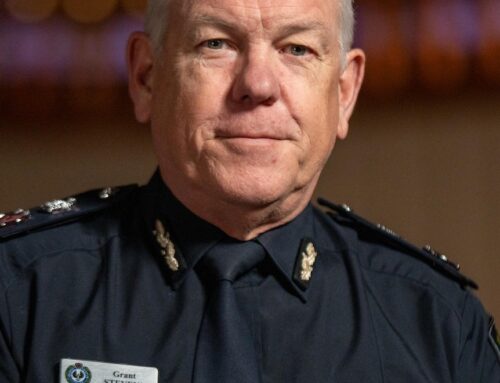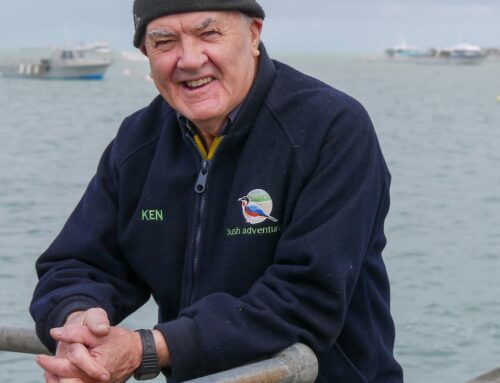Recreating the first pour of beer from a regional pub 165 years ago proved to be more challenging than you might expect.
Built in the mid-1800s, the rustic Overland Corner Hotel looks over Murray River wetlands in South Australia.
It was founded by pioneering pastoralists the Brand brothers, as a convenient watering point for paddlesteamers and coach passengers on Cobdogla Station.
Two years ago, current hotel publican Brad Flowers set out to produce a pint of beer to replicate what would have been served in 1859 to mark this year’s South Australian History Festival.
“We’ve been collecting a lot of data, speaking to historians, Brand family members, and looking at the manifest of what the [brothers] brought out with them,” Mr Flowers said.
To bring the vision to life, the publican enlisted the aid of Jackson Beavis, head brewer at the Woolshed Brewery upstream.
Mr Beavis’s passion for beer began in his university days, and his hobby turned into a professional brewing career about 13 years ago.
“I’m personally a big fan of traditional, British styles of beer, but the actual history of this particular project was so unique to Australia that it really piqued my interest,” he said.
“Once I started getting into it and reading the history of pre-Federation settlement of the area, the beer they drank and how they operated with beer and alcohol in general … it was just fascinating.”
Extensive efforts to recreate
The publican highlighted the taxing lengths the pair went to in their efforts to reproduce the beer.
“We’ve been able to get the original hops, Kemp Golding hops from [Graveshead] in the United Kingdom,” Mr Flowers said.
“And we teamed up with a company called Ferveo who went to the yeast library and pulled the original yeast from 1860.
“To top it all off, Jack has gotten a hand pump from the UK to pour the beer out of.”
Mr Beavis said there were challenges throughout the brewing process.
“People do ask, ‘Did you do a trial batch of this beer?’ But this is the trial batch,” he said.
“It was a bit hard to predict exactly how this yeast would ferment the beer, what temperature it would like and the conditions it would like.
“It’s very different to modern yeast and all yeasts behave very differently.”
The end product is a traditional English porter, and has been considered a success.
“It uses toasted malt to get a lot of those flavours, think of that dark chocolate,” Mr Flowers said.
“It isn’t a stout, it is a bit lighter, so there’s plenty of appeal for everyone.”
A lifelong passion for beer
Mr Beavis’s research led him to a phone call with Peter Symons, whose lifelong interest has taken the form of three books on historical beer, with a fourth on the way.
“He was a wealth of knowledge,” Mr Beavis said.
“That really gave me the base to hone in on the year and era of the beer I was looking for [and] piece together a typical beer that would have been served at the time.”
Mr Symons said the manufacture of beer in Australia might have come from colonists arriving from overseas, but there were many differences between the two countries.
“As you get towards the end of the 19th century you see Australian breweries taking advantage of best practice from all around the world,” he said.
“The UK brewers were much more conservative, the idea of artificial carbonate and pasteurisation of beer took a long while to take hold in the UK.
“Whereas after the Great War most of the capital city breweries were producing that sort of beer.”
Mr Symons said beer produced today would be different than ones drunk in the 1800s by virtue of advances in several areas.
“The sanitation and fermentation practices of the 1850s and 60s were probably nothing like what you would get today, so you’d be more likely to get a few off flavours,” he said.
“It wouldn’t taste dissimilar, but what you tasted one day and what you tasted the next could be totally different because there wasn’t necessarily a lot of consistency.”
Back in the Riverland at the hotel, the brewers cheered and charged their porters in celebration of a job well done.
But Mr Flowers said his research for reproducing the beer led to more discoveries, and this might not be the last time he looks into the history books for a new brew.
Mr Beavis agreed and said he would take it on if the opportunity came up to brew another historical beer in the region.
“It was such a fun project … if something warrants making another beer like that, it could be done,” he said.
Get our local newsletter, delivered free each Tuesday




